Physics-Astronomy: Home of the best science(focusing physics, astronomy) and technology news since 2012. Keep up with the latest news via email or social media. We are curious about the Universe, are you?
Get the latest international news and world events from around the world.
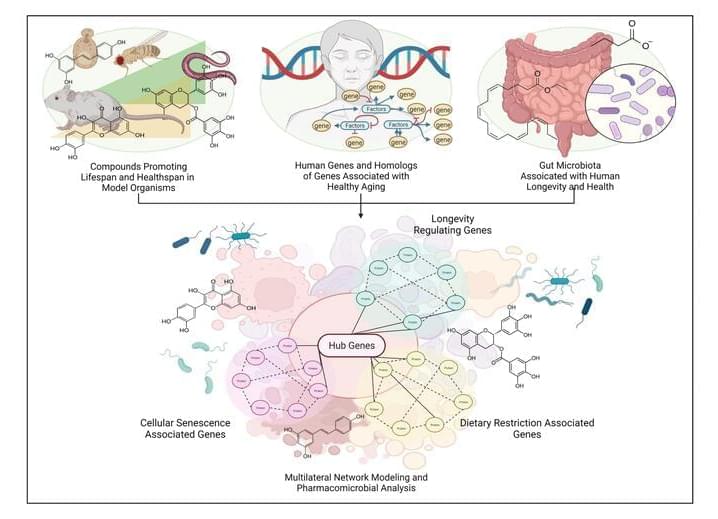
Model organism life extending therapeutics modulate diverse nodes in the drug-gene-microbe tripartite human longevity interactome
Advances in antiaging drug/lead discovery in animal models constitute a large body of literature on novel senotherapeutics and geroprotectives. However, with little direct evidence or mechanism of action in humans—these drugs are utilized as nutraceuticals or repurposed supplements without proper testing directions, appropriate biomarkers, or consistent in-vivo models. In this study, we take previously identified drug candidates that have significant evidence of prolonging lifespan and promoting healthy aging in model organisms, and simulate them in human metabolic interactome networks. Screening for drug-likeness, toxicity, and KEGG network correlation scores, we generated a library of 285 safe and bioavailable compounds. We interrogated this library to present computational modeling-derived estimations of a tripartite interaction map of animal geroprotective compounds in the human molecular interactome extracted from longevity, senescence, and dietary restriction-associated genes. Our findings reflect previous studies in aging-associated metabolic disorders, and predict 25 best-connected drug interactors including Resveratrol, EGCG, Metformin, Trichostatin A, Caffeic Acid and Quercetin as direct modulators of lifespan and healthspan-associated pathways. We further clustered these compounds and the functionally enriched subnetworks therewith to identify longevity-exclusive, senescence-exclusive, pseudo-omniregulators and omniregulators within the set of interactome hub genes. Additionally, serum markers for drug-interactions, and interactions with potentially geroprotective gut microbial species distinguish the current study and present a holistic depiction of optimum gut microbial alteration by candidate drugs. These findings provide a systems level model of animal life-extending therapeutics in human systems, and act as precursors for expediting the ongoing global effort to find effective antiaging pharmacological interventions.
Communicated by Ramaswamy H. Sarma.
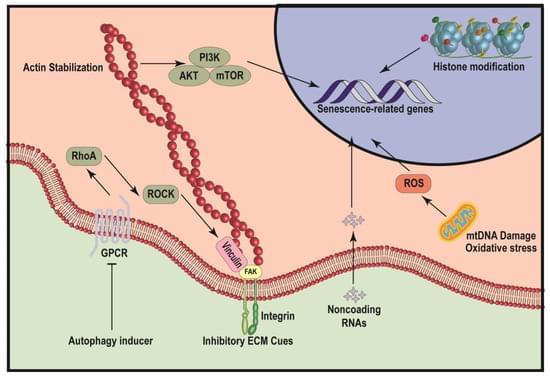
Rejuvenation of Mesenchymal Stem Cells to Ameliorate Skeletal Aging
Advanced age is a shared risk factor for many chronic and debilitating skeletal diseases including osteoporosis and periodontitis. Mesenchymal stem cells develop various aging phenotypes including the onset of senescence, intrinsic loss of regenerative potential and exacerbation of inflammatory microenvironment via secretory factors. This review elaborates on the emerging concepts on the molecular and epigenetic mechanisms of MSC senescence, such as the accumulation of oxidative stress, DNA damage and mitochondrial dysfunction. Senescent MSCs aggravate local inflammation, disrupt bone remodeling and bone-fat balance, thereby contributing to the progression of age-related bone diseases. Various rejuvenation strategies to target senescent MSCs could present a promising paradigm to restore skeletal aging.
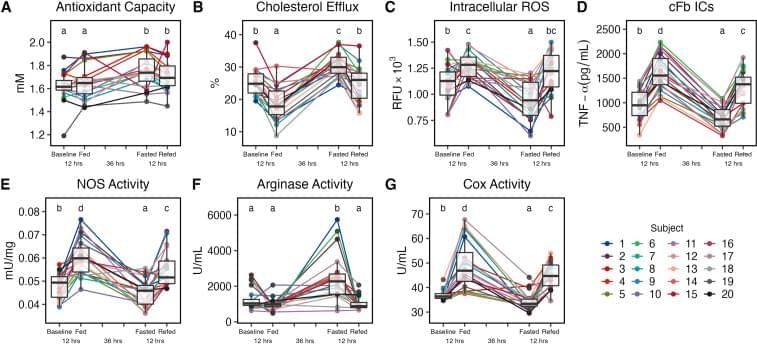
Human fasting modulates macrophage function and upregulates multiple bioactive metabolites that extend lifespan in Caenorhabditis elegans: a pilot clinical study
Periodic prolonged fasting (PF) extends lifespan in model organisms and ameliorates multiple disease states both clinically and experimentally owing, in part, to its ability to modulate the immune system. However, the relationship between metabolic factors, immunity, and longevity during PF remains poorly characterized especially in humans.
This study aimed to observe the effects of PF in human subjects on the clinical and experimental markers of metabolic and immune health and uncover underlying plasma-borne factors that may be responsible for these effects.
In this rigorously controlled pilot study ( ClinicalTrial.gov identifier, NCT03487679), 20 young males and females participated in a 3D study protocol including assessments of 4 distinct metabolic states: 1) overnight fasted baseline state, 2) 2-h postprandial fed state, 3) 36-h fasted state, and 4 ) final 2-h postprandial re-fed state 12 h after the 36-h fasting period. Clinical and experimental markers of immune and metabolic health were assessed for each state along with comprehensive metabolomic profiling of participant plasma. Bioactive metabolites identified to be upregulated in circulation after 36 h of fasting were then assessed for their ability to mimic the effects of fasting in isolated human macrophage as well as the ability to extend lifespan in Caenorhabditis elegans.

How an ancient polymath first calculated Earth’s size, as told by Carl Sagan
Carl Sagan explores the life and legacy of the ancient Greek polymath Eratosthenes, who, in the 3rd century BCE, not only understood Earth to be spherical, but was able to calculate its circumference with remarkable accuracy. In detailing Eratosthenes’ ingenious methods, Sagan provides a fascinating science history lesson that doubles as a tribute to the remarkable ingenuity of ancient thinkers, who were able to uncover extraordinary truths with the simplest of tools.
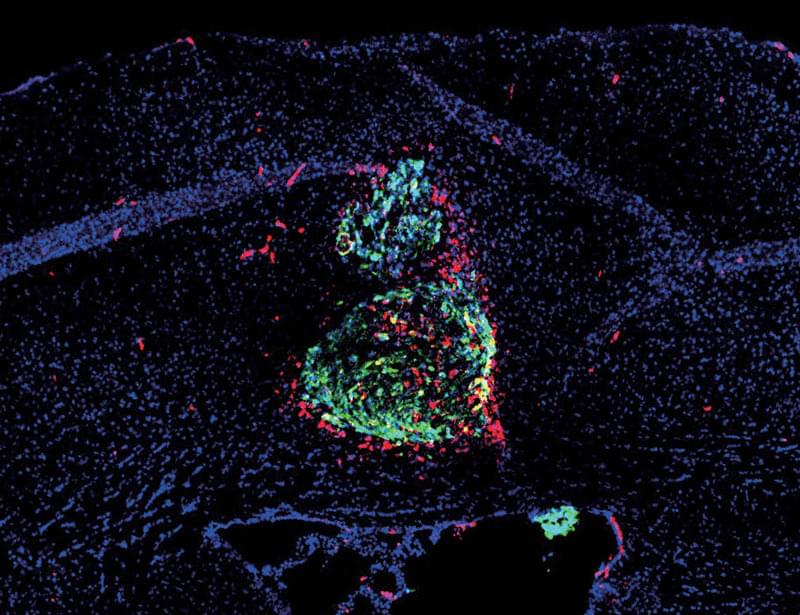
Mechanical nanosurgery of chemoresistant glioblastoma using magnetically controlled carbon nanotubes
Nanomedicine uses nanomaterials [e.g., carbon nanotubes (CNTs), nanoparticles, and nanodiscs] or organic nanostructures (e.g., DNA origami and liposomes) for drug delivery (8–10), medical imaging (11–14), and tissue regeneration (15). Nanomaterials offer therapeutic efficacy through their tissue permeation, interaction with an external energy source, and capability to be combined with other therapeutic modalities (16, 17). Because we recently demonstrated that GBM cells are mechanosensitive (18), we set to use nanomaterials to develop a nanoscale mechanical approach to treat GBM. Mechanical perturbation has been investigated as an approach to target cancer cells. For example, magnetic field–actuated nanomaterials compromise the integrity of plasma membrane, leading to the death of in vitro–cultured GBM cells (19) and breast cancer cells (20). GBM cells, which were preincubated with magnetic nanoparticles, were implanted into mice to generate xenograft tumors. A rotating magnetic field, which was then applied to these magnetic particles–harboring tumors, suppressed GBM growth (21). Similarly, magnetic field mobilization of mitochondria-targeting magnetic nanoparticle chains demonstrated efficacy in inhibiting GBM growth in mice (22). While these studies showed that magnetic field–controlled nanomaterials can be used in cancer treatment, the utility of magnetic nanomaterials in treating chemoresistant tumors, the root cause of tumor relapse and patient death, remains unexplored.
GBM displays an extreme level of heterogeneity at genomic, epigenetic, biochemical signaling, and cellular composition levels (23). The heterogeneous nature of GBM confers treatment resilience to tumors and leads to a unifying therapy resistance mechanism; i.e., suppressing selected proteins or biochemical pathways provides a fertile ground for alternative signaling mechanisms, which are not targeted by the given therapy, to fuel GBM growth (24). In other words, the “whack-a-mole” approach failed to benefit patients with GBM for decades. For this reason, we hypothesized that nanomaterial-based mechanical treatment of cancer cells, rather than specific targeting of signaling pathways, can overcome the therapy resistance of this biologically plastic disease. To this end, we engineered a mechanical nanosurgery approach using magnetic CNTs (mCNTs; nanotubes with carbon surface and a cavity filled with iron particles) based on the following reasons.
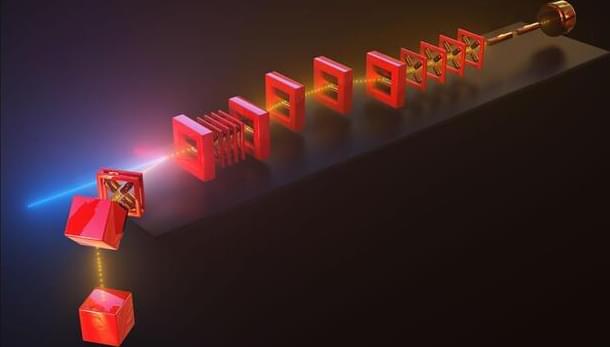

Scientists Discover Giant Red Spider That Can Live for 20 Years
Australian scientists have just discovered a new species of arachnid, dubbed the giant trapdoor spider, in Queensland. It’s huge, bright red, and it can live for up to two decades.
Before you panic, we should note that trapdoor spiders aren’t considered a threat to humans. While they are venomous, their bites aren’t known to have any lasting effect on people, reports the BBC. Besides, hikers rarely encounter them; the spiders are nocturnal and spend most of their lives underground. And while they’re big for trapdoor spiders, they’re not as massive as, say, tarantulas or giant desert scorpions.
Female giant trapdoor spiders can grow up to two inches long. That’s about twice the size of other trapdoor spiders. Male trapdoor spiders are slightly smaller.
OpenAI CEO responds to Jordan Peterson criticism | Sam Altman and Lex Fridman
Lex Fridman Podcast full episode: https://www.youtube.com/watch?v=L_Guz73e6fw.
Please support this podcast by checking out our sponsors:
- NetSuite: http://netsuite.com/lex to get free product tour.
- SimpliSafe: https://simplisafe.com/lex.
- ExpressVPN: https://expressvpn.com/lexpod to get 3 months free.
GUEST BIO:
Sam Altman is the CEO of OpenAI, the company behind GPT-4, ChatGPT, DALL-E, Codex, and many other state-of-the-art AI technologies.
PODCAST INFO:
Podcast website: https://lexfridman.com/podcast.
Apple Podcasts: https://apple.co/2lwqZIr.
Spotify: https://spoti.fi/2nEwCF8
RSS: https://lexfridman.com/feed/podcast/
Full episodes playlist: https://www.youtube.com/playlist?list=PLrAXtmErZgOdP_8GztsuKi9nrraNbKKp4
Clips playlist: https://www.youtube.com/playlist?list=PLrAXtmErZgOeciFP3CBCIEElOJeitOr41
SOCIAL:
- Twitter: https://twitter.com/lexfridman.
- LinkedIn: https://www.linkedin.com/in/lexfridman.
- Facebook: https://www.facebook.com/lexfridman.
- Instagram: https://www.instagram.com/lexfridman.
- Medium: https://medium.com/@lexfridman.
- Reddit: https://reddit.com/r/lexfridman.
- Support on Patreon: https://www.patreon.com/lexfridman
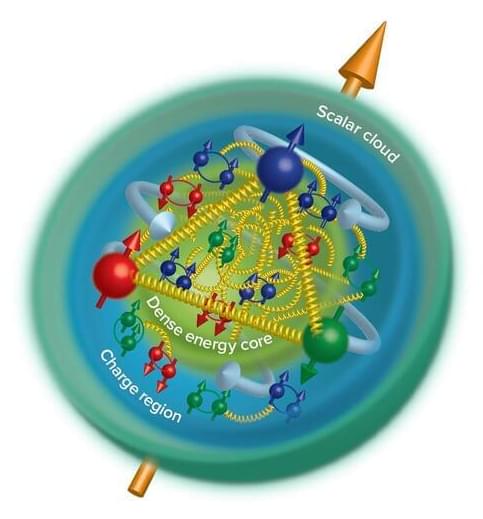
Experiment finds gluon mass in the proton
Nuclear physicists may have finally pinpointed where in the proton a large fraction of its mass resides. A recent experiment carried out at the U.S. Department of Energy’s Thomas Jefferson National Accelerator Facility has revealed the radius of the proton’s mass that is generated by the strong force as it glues together the proton’s building block quarks. The result was recently published in Nature.
One of the biggest mysteries of the proton is the origin of its mass. It turns out that the proton’s measured mass doesn’t just come from its physical building blocks, its three so-called valence quarks.
“If you add up the Standard Model masses of the quarks in a proton, you only get a small fraction of the proton’s mass,” explained experiment co-spokesperson Sylvester Joosten, an experimental physicist at DOE’s Argonne National Laboratory.